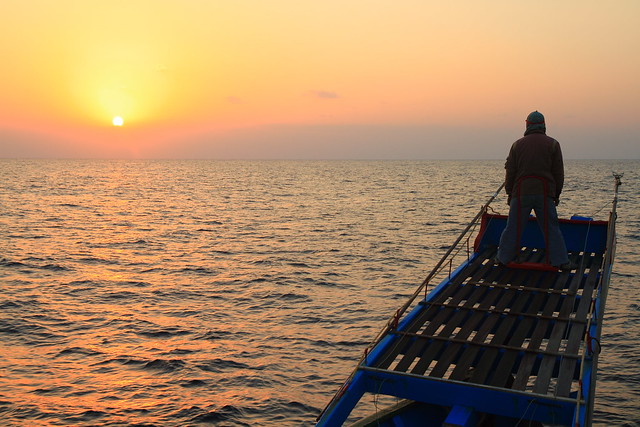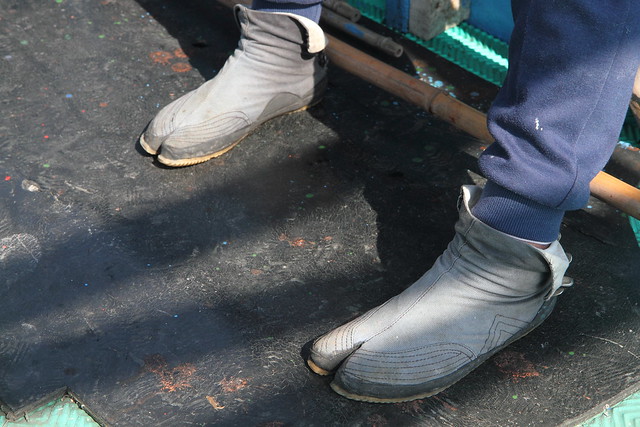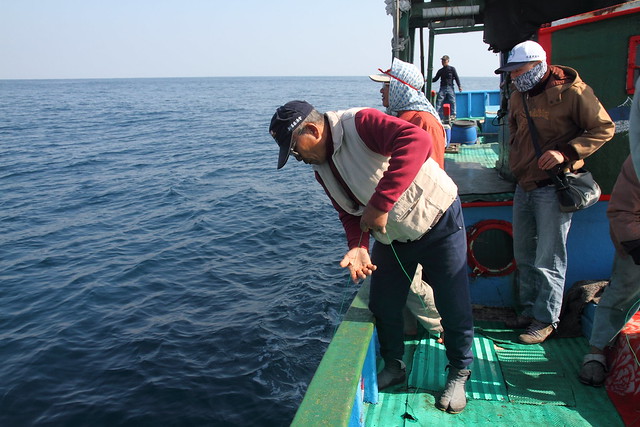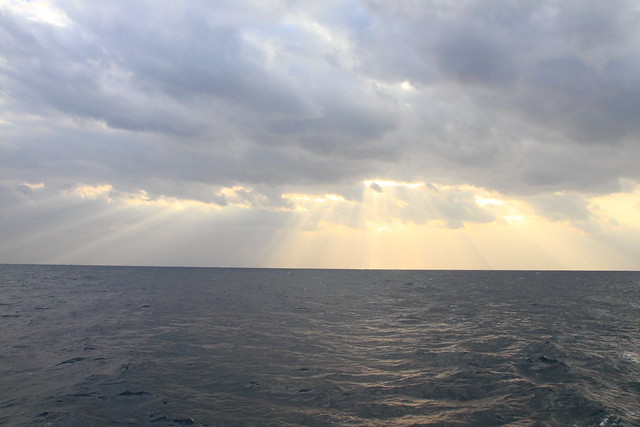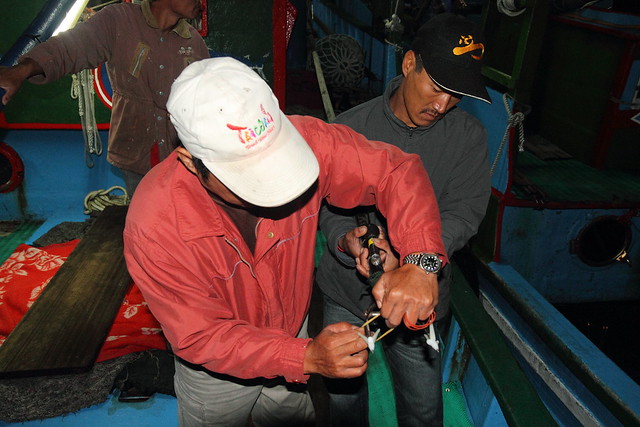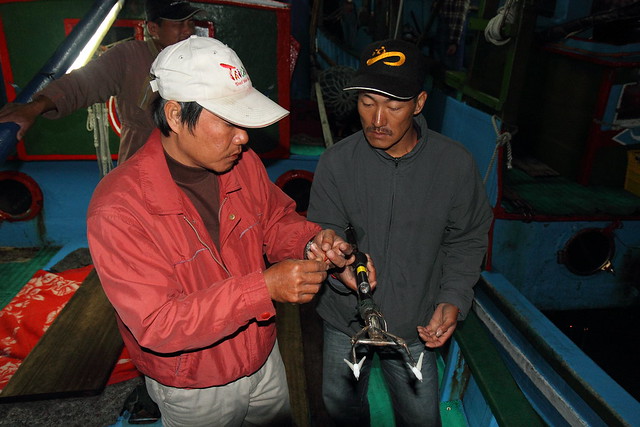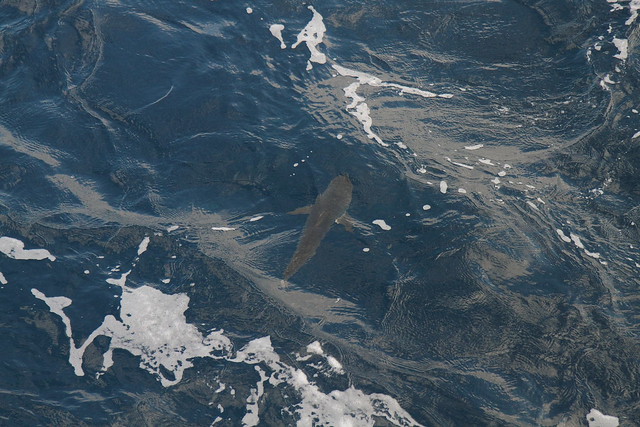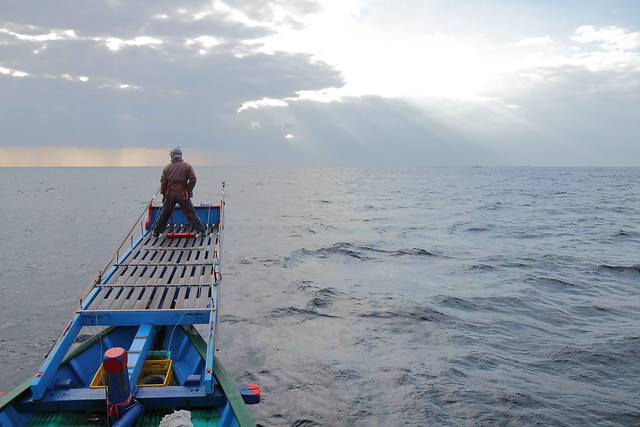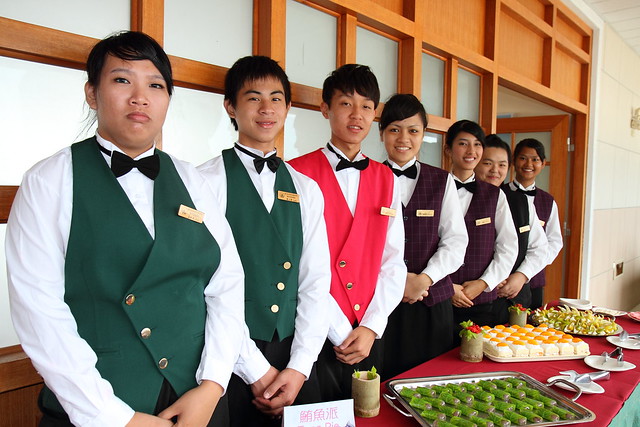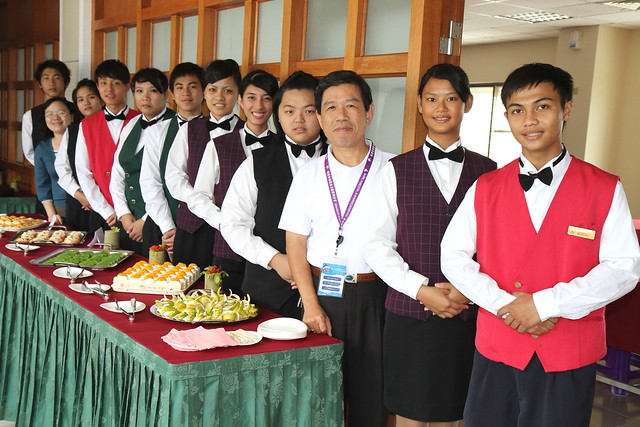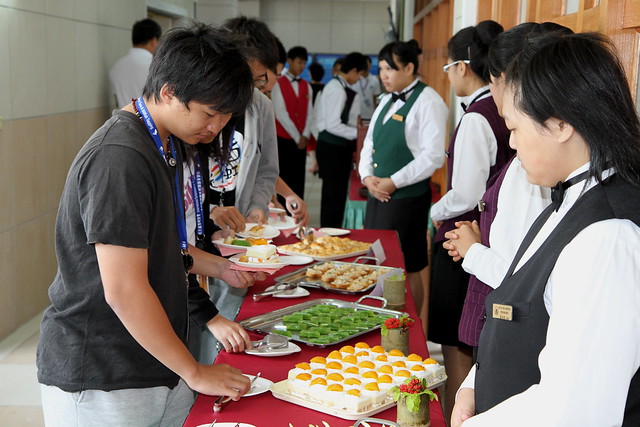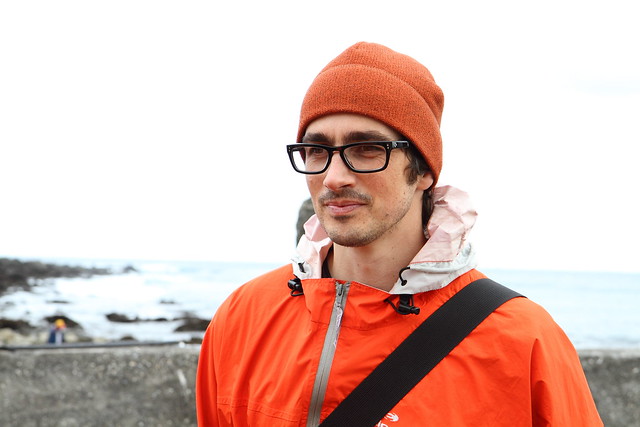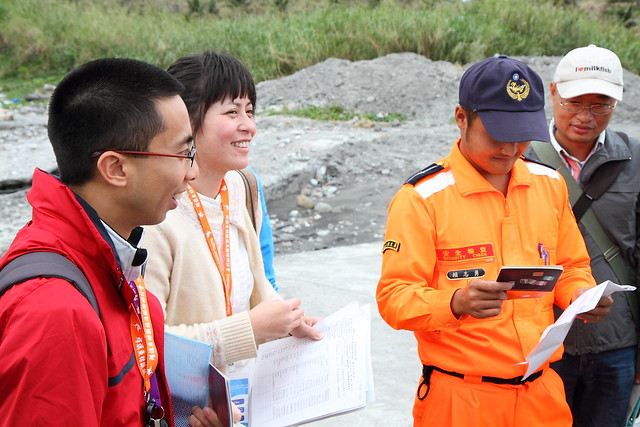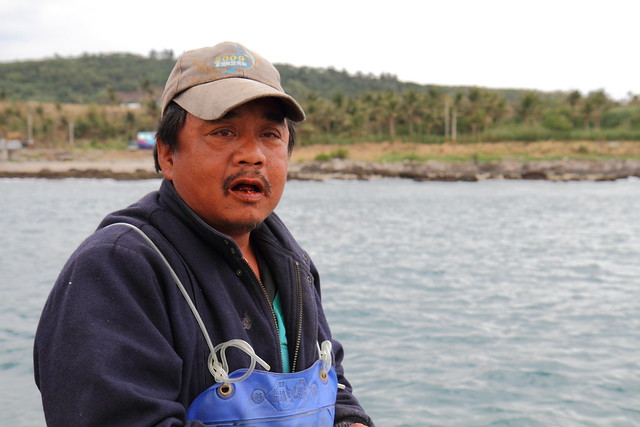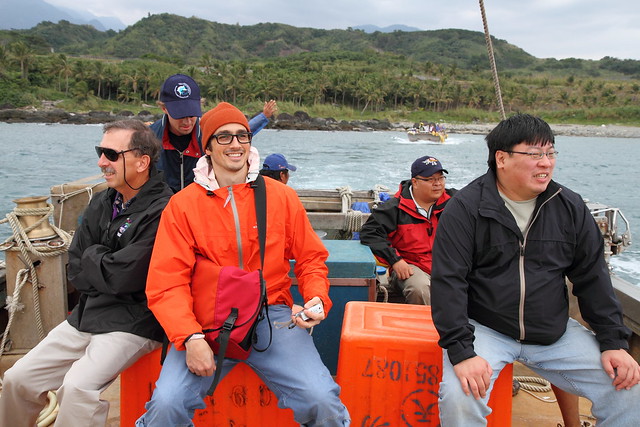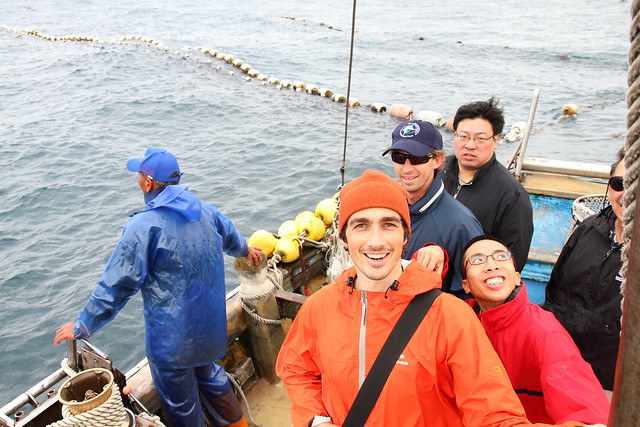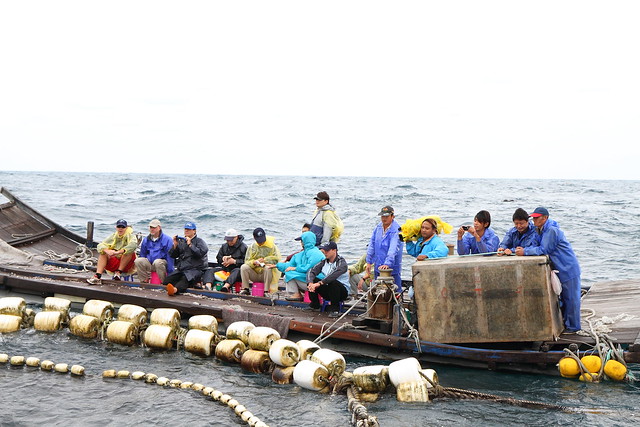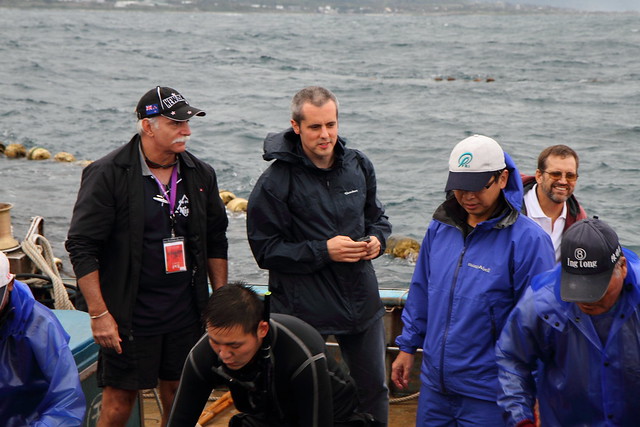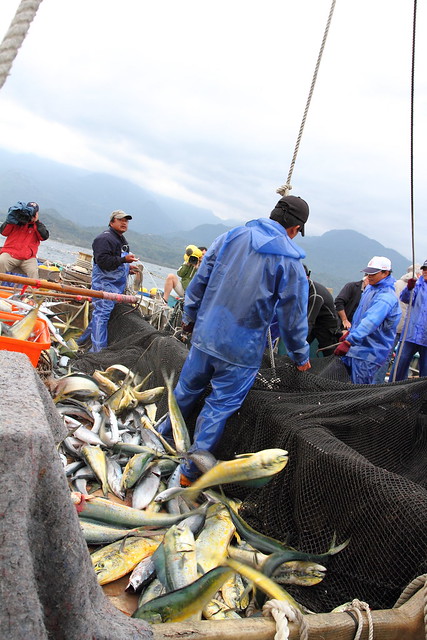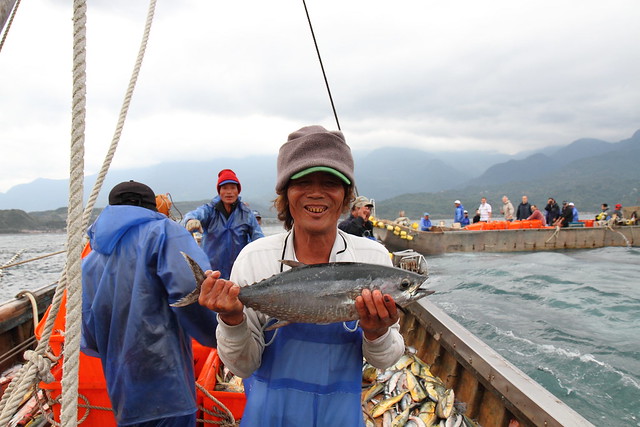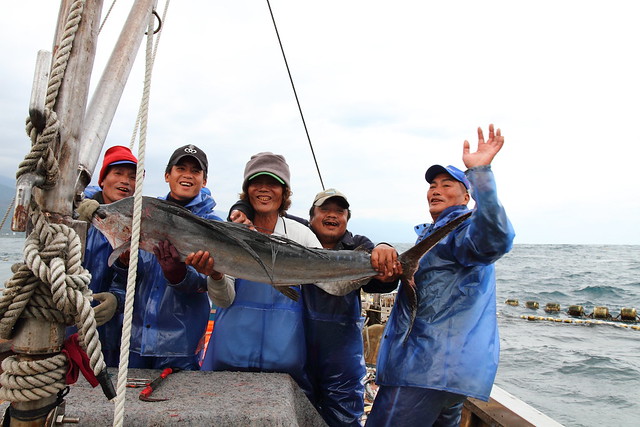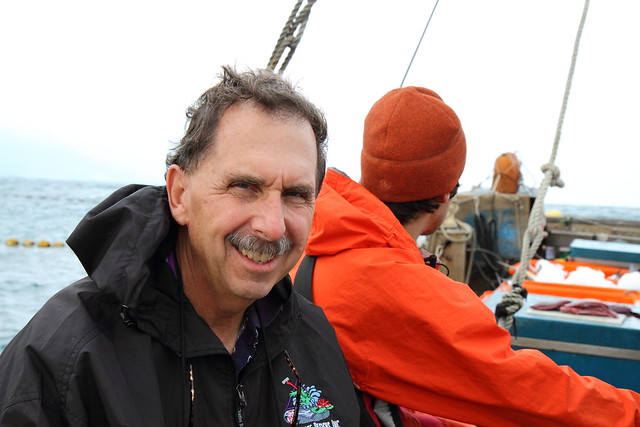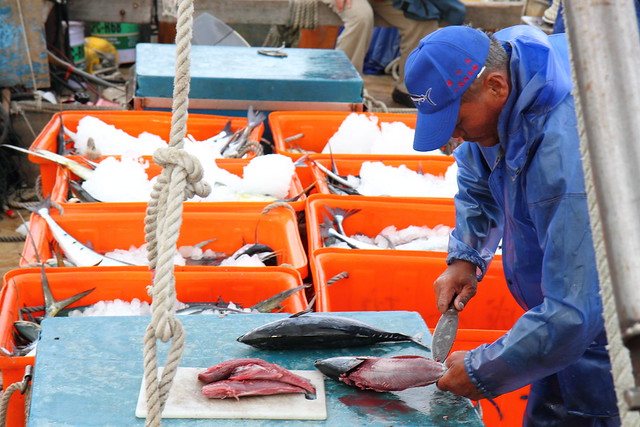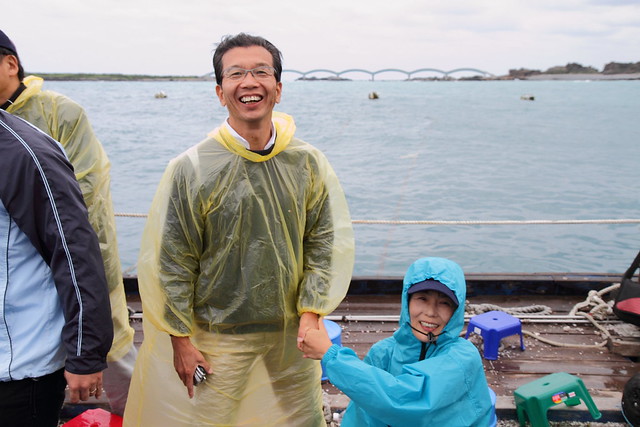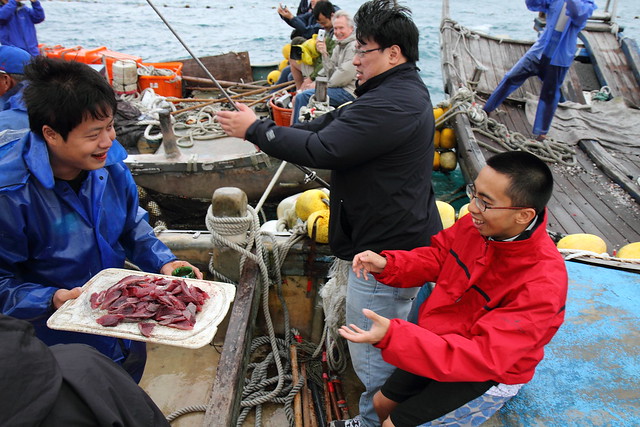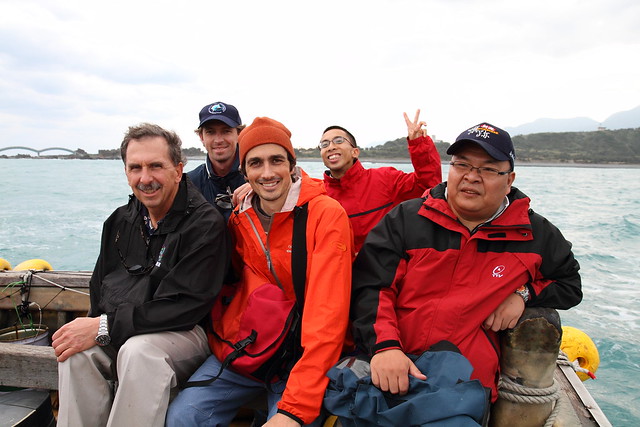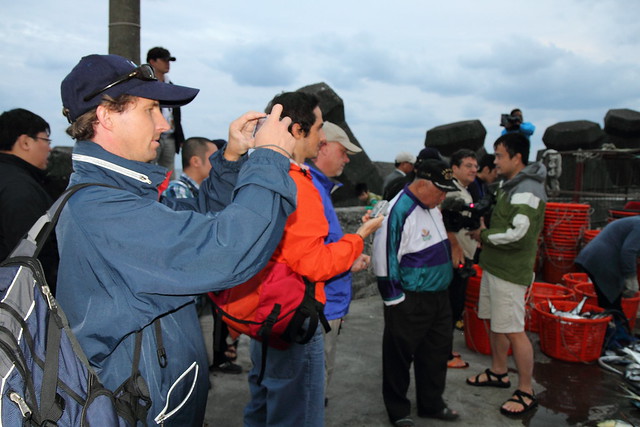
前文:
1127標識放流-13清晨特別冷,一早在外海就領悟到了一句話:「早餐吃的早,吐也吐的早」
02
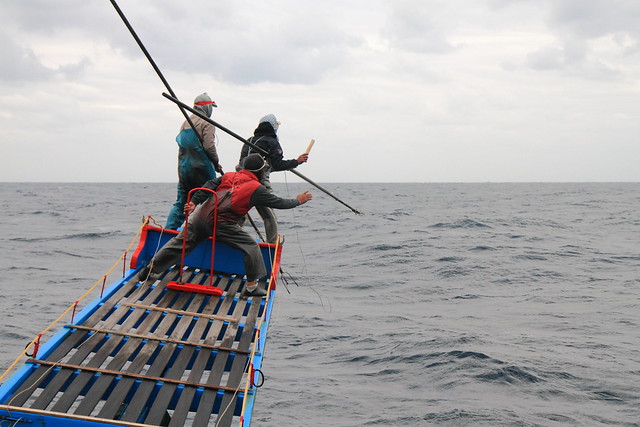
12月03日,一共發現二次白肉旗魚及一次一百多公斤的鯊魚
但可惜的是海色很差,魚常常一溜煙的就不見了
上圖為一早就發現了旗魚
03

當天的浪報十級,十級的浪就不得不穿上雨衣
因為船身與海浪打擊出來的浪花,常常迎面而來
04

裝有衛星標的鏢竿發射,可惜…失敗了
左鏢手未能即時補上一發,也相當的可惜
05

重新搜尋魚跡…
沒射中的話,一次少賺大概都是上萬元不等,好的話可能是十來萬元
06

下午最後一波攻擊,鏢手永龍從非常遠約200尺的位置發現了旗魚
船開至旗魚的所在點後,便開始與旗魚展開一路的大海追逐戰
07

船身右方友船 - 「協吉號」也參與進攻
雖然旗魚有游進他們的攻擊範圍,但鏢手仍然無法鎖定出鏢
08

就這麼一路追逐了十幾分鐘
船長說,這尾旗魚游的相當快,很難出鏢
09
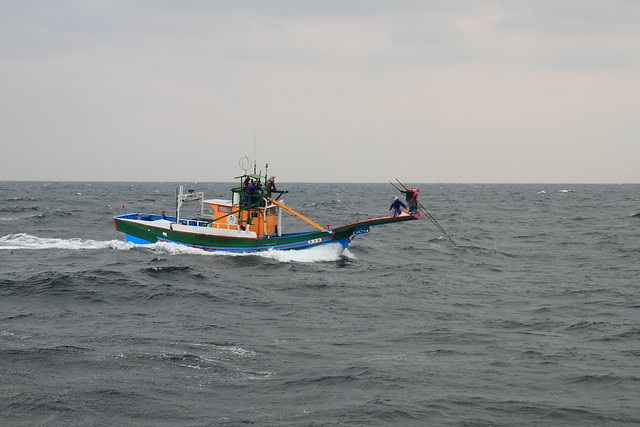
接著船身左處,永福叔所駕駛的「龍漁發」也參與進攻
三台船追一尾旗魚,拼了十幾分鐘,最終還是沒人能出鏢…嘆!好可惜
10
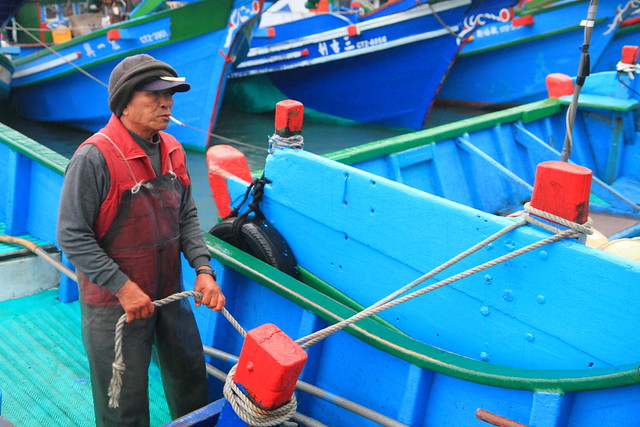
回到石梯港,全身又冷又累又餓又暈
港內開始下起雨,是該起程回家了
7D拍攝影片:
December 3rd, 2010; Again the team went north, travelling with the Harpoon fishing fleet has brought interest and delight of local fishermen. Joining the crew on board we have been able to share the excitement about harpooning marlin. Advice is passed about appropriate weather condition and how to prepare ourselves for a day on the ocean. Warm breakfast also ensures energy for the day. The wind in Chenggong was howling throughout the previous night. Prepared for waves and rain, we climbed aboard. Preparing the modified harpoon with our tags the boats left the harbor at sun-up.
The caudal fin for marlin is distinctive. As a fish recuperates after deep diving or, possibly, just enjoying the sun’s warming light, marlin come to the surface for brief periods. This is the opportunity harpooners are looking for; a slender, ribbed fin extended above the surface of the water. Amidst the whitecaps and waves it is exceedingly difficult to spot, however each vessel has four men plus the captain continuously scanning the surrounding water for a glimpse of the fin. Today, one crew is stationed on the bow, as the swell is greater than 3m, sometimes he is almost level with elevated viewing deck and then, as the wave passes, he is plummeted down as if to disappear under water. The waves spray and the occasional rain means we all get wet. So thankful for adequate wet weather gear!
Spotting a fin, a cry goes out, “There, there, there!!!” The engine is revved up, a cloud of diesel smoke bellows and the chase is on! The visible fin disappears and reappears as the fish seemingly evades the boat. The captain quickly assumes his position at the bow, harpoon in hand. His first mate, the left harpooner, picks up his harpoon and a third crew, the director, join them on the bow. A skilled driver positions the boat at the hand signals and further calls for the prized fish. Working together as a team, the highly maneuverable water craft follows the twisting and turning of the fish. A lure is thrown by the captain, timing the ascent of the marlin to the bait with his harpoon, a successful tag will pierce the marlin’s body. Two anchors secure themselves between the fin and a vertebra, fastening the tag and the harpoon pole is extracted.
Two marlins were chased to no avail; a shortfin mako (Isurus carcharias) was also seen and pursued however this two failed to produce a successful tagging episode. Returning to port the crew were hopeful for another day fishing, we returned to Chenggong in the car, exhausted.
